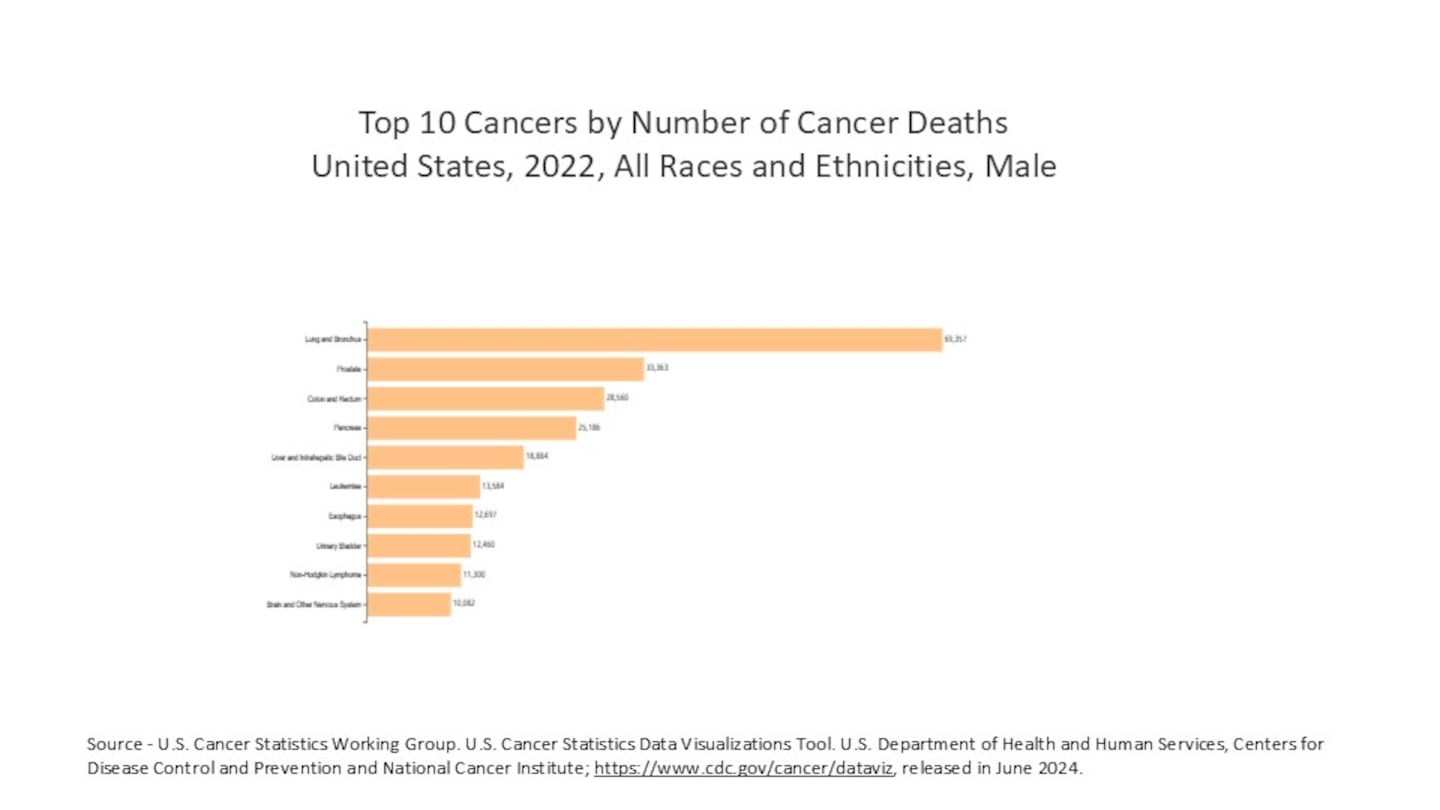As news of former President Joe Biden’s prostate cancer diagnosis spreads, people may be wondering what the signs and symptoms are of the cancer that affects one in eight men.
The American Cancer Society said that prostate cancer is the most common form of cancer other than skin cancer in men in the U.S.
It is the second-leading cause of cancer death in men, behind lung cancer.
The organization estimates that about 313,780 new cases of prostate cancer will be diagnosed in the country this year. About 35,770 deaths will be connected to the disease.
The risk of prostate cancer varies depending on age, race or ethnicity and other factors.
About six in every 10 cases are found in men aged 65 or older, with the average age of diagnosis at 67.
African American men and Caribbean men of African ancestry have a higher risk, the American Cancer Society said.
What is prostate cancer?
The Mayo Clinic said it "is a growth of cells that starts in the prostate," which is located just below the bladder and is part of the reproductive system.
What are the symptoms of prostate cancer?
Early signs of prostate cancer include, but are not limited to:
- Blood in the urine
- Needing to urinate more often, especially at night
- Trouble starting to urinate
Advanced prostate cancer signs include, but are not limited to:
- Accidental urine leaking
- Back pain
- Bone Pane
- Feeling tired
- Losing weight
- Weakness in arms or legs
For a complete list, click here.
How is it diagnosed?
There are tests that can determine if you have prostate cancer. You may first seek out your primary care doctor, who may refer you to a urologist.
You will be asked about the symptoms, family history and other risk factors. There may also be a prostate exam. If they find something concerning you may be directed to have a PSA blood test that will look for the prostate-specific antigen. There is no specific limit that will 100% determine if a man has cancer, but there are indicators that would suggest additional testing.
If cancer is suspected, then patients go through a prostate biopsy.
If cancer is found, it will receive a Gleason score or Grade Group. There may also be additional tests, including genetic testing, imaging, bone scans and others that may help the doctor determine treatments.
What is a Gleason score or Grade Group?
A Gleason score or Grade Group is based on what the cancer looks like under a microscope. Higher numbers mean more abnormal-looking cells and are more likely to grow and spread quickly, the American Cancer Society said.
Gleason score has a number assigned from one to five depending on how the cancer looks compared to normal tissues. A one means it looks almost like normal tissue. A five means it is very abnormal. Most are given a score of three or higher.
Prostate cancer usually has areas of different grades, so the numbers of the two areas are added together. The first number is for the most common type of tissue found, the second is the secondary type.
So if tissue has a primary number three designator and a secondary number four, they are added to get a Gleason score or a Gleason sum of seven.
All that to say, a Gleason (total) score can be a low as two, but is unlikely, and as high as 10, with scores below six not usually used, the society explained.
Grade Groups take into account the number placement, meaning that a 3+4=7 Gleason score is not as severe as a 4+3=7 score, since the first number means the most common type of abnormal tissue.
Grade Groups are as follows:
- Grade Group 1 = Gleason 6 (or less)
- Grade Group 2 = Gleason 3+4=7
- Grade Group 3 = Gleason 4+3=7
- Grade Group 4 = Gleason 8
- Grade Group 5 = Gleason 9-10
For more on grading, click here.
What are the stages of prostate cancer?
Like many cancers, prostate cancer is broken down into stages with Stage 1 being small and only in the prostate in one side, the Mayo Clinic said.
Stage 4B means it has spread to other parts of the body, for example, the bones.
The stage will determine the likelihood of it being cured.
Other factors for the cure include age, overall health, PSA test results, biopsy results and grade group.
What is the treatment?
For early cases, treatment may include surgery, radiation therapy and observation of the cancer to see if it grows.
There is also hormone therapy for prostate cancer that stops testosterone from being made or reaching cancer cells, causing the cancer to die or grow more slowly.
For more on the treatments, click here.
If the cancer spreads, or metastasizes, it can still be treated, but more difficult to cure. If it cannot be cured, then treatments can slow the growth and extend longevity, the Mayo Clinic said.
What is the survival rate of prostate cancer?
The survival rate for prostate cancer depends on various factors.
Keep in mind the rate is determined by what stage the cancer was in when it was first diagnosed, the American Cancer Society explained.
If someone has localized or regional prostate cancer, the five-year survival rate is nearly 100%, but that number plummets to around 36% if the cancer is considered distant, according to the Centers for Disease Control and Prevention.
©2025 Cox Media Group






